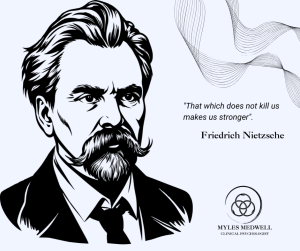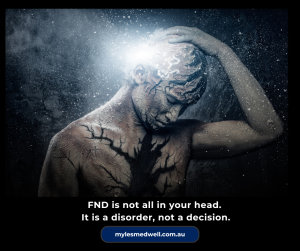How the Unconscious Shapes Physical Symptoms
In psychoanalytic therapy, particularly within Lacanian and Freudian frameworks, the unconscious isn’t seen as a vague or metaphorical concept. Rather, it’s a structured and dynamic part of psychic life. One that expresses itself through dreams, slips of the tongue, relational patterns, and often, through the body.
The Body as a Canvas of the Unconscious
Some clients arrive in therapy experiencing physical symptoms that have no identifiable medical cause. They feel fatigue, chronic pain, tremors, and other neurological disturbance and these are not imagined. They are real and often deeply distressing. But beneath the surface, such symptoms may be carrying unconscious meaning. This is what psychoanalysis refers to as conversion or somatisation.
Rather than being purely biological, these symptoms might reflect unresolved emotional conflicts, repressed trauma, or internal contradictions that have found expression in the only available medium: the body.
“The body doesn’t lie – it speaks in its own language.”
— Jacques Lacan

Functional Symptoms and Symbolic Gaps
Today, many of these presentations are diagnosed as Functional Neurological Disorder (FND). While the language may have changed, the phenomenon remains strikingly familiar to early psychoanalytic case studies.
In these instances, the body seems to be fulfilling a function the psyche cannot. It is acting out a story that cannot yet be told in words. When trauma or conflict remains unprocessed, it doesn’t disappear; it finds expression elsewhere. Often, it is the lack of representation for a painful experience that creates the conditions for physical expression.
Repetition, the Drive, and Jouissance
Psychoanalysis suggests that unconscious processes don’t just “affect” the body, they structure it. The concept of the drive in Lacanian theory isn’t a biological instinct, but a looping force that circulates through the body’s zones of satisfaction and tension. When this loop gets caught it can result in what Lacan called jouissance. When pleasure and pain collapse into one, the result is a kind of painful enjoyment.
This may show up in therapy as repeated injuries, unexplained flare-ups, or compulsive bodily behaviours. In these cases, the symptom is not random. It is structured repetition, often echoing something in the individual’s psychic history.
When Words Are Not Enough
For some, the body becomes the primary site of communication. This might be due to early trauma, a developmental block in symbolisation, or a cultural script that discourages emotional expression. In such cases, talking alone may not be enough but it is still essential.
The therapeutic space becomes a place where previously unspeakable experiences can be brought into language. Through psychoanalysis, clients can begin to name the unnamed, to associate freely, and in doing so, loosen the grip of the symptom on the body.
Listening to the Symptom
Rather than attempting to “fix” the body directly, psychoanalytic work invites a different approach: listening to it.
What might the symptom be trying to say? What feeling or experience has been left outside the frame of speech? What is being repeated, again and again, in the silence between words?
In many cases, as the unconscious begins to speak through association, metaphor, dreams, and dialogue it is then that the body no longer needs to hold the burden of expression.

Final Thoughts
In a culture that often separates mind and body, psychoanalysis offers a powerful alternative. One that treats the symptom not as an enemy to be eradicated, but as a message to be heard.
By listening to the language of the body, we move closer to understanding the person in their entirety. Our body is not just its biology, but also its symbols, metaphors, and patterns.
Because sometimes, healing begins not with answers, but with the courage to ask: What is my body trying to tell me?




